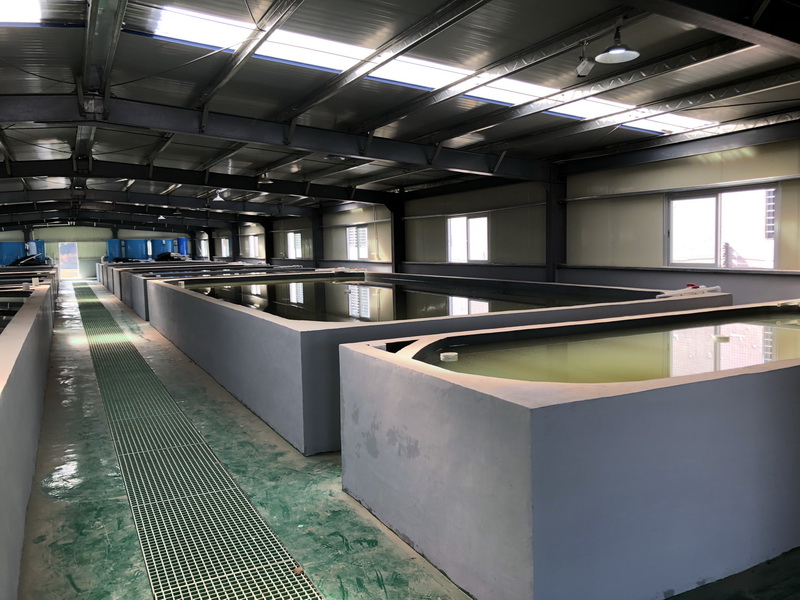Fresh water culture technology of Penaeus vannamei
Penaeus vannamei, also known as Litopenaeus vannamei, is a Marine shrimp native to the coasts of South and Central America. It was introduced to China at a very early age. Because this shrimp meat rate is high, to the environment adaptability is strong, feed sources are wide. So it was quickly promoted in China. In recent years, the breeding area of Penaeus vannamei is expanding year by year in China. Brackish water is generally used for aquaculture. It has a certain degree of salt. In terms of nutrition, white prawn is a high protein aquatic product. Meat contains no fat, so it is an excellent source of protein. In major cities, the South American prawn is widely welcomed.
However, the South American white prawn also encountered some problems in the promotion process. For example, in some traditional areas of freshwater aquaculture in the interior, white shrimp can not adapt to pure freshwater environment. Therefore, the promotion in this respect can not be carried out, which has become a bottleneck to restrict the promotion of white shrimp to the mainland. The second problem is provenance limitation. The parents of South American white shrimp have long been subject to foreign natural fishing varieties. Under the condition of artificial cultivation of parents, its germplasm will continue to degrade, so our domestic seedling enterprises. To keep to some foreign enterprises to buy pro shrimp, the cost is very high. A shrimp from Thailand, for example, can cost 400 renminbi. Therefore, many domestic seedling companies are restricted by the provenance of Penaeus vannamei. Fortunately, in recent years, domestic also began to pay attention to the germplasm of South American white shrimp. I began to try to keep some seeds in some shrimp plants and cultivate some green shrimp of South American penaeus vannamei. Then some biological genes and other aspects of the study. So that our domestic germplasm resources can achieve self-sufficiency.
On the other hand, in the process from the nursery to the adult culture of white shrimp, we continue to dilute the cultivation. Allowing it to gradually adapt to lower salinity. Under the condition of factory circulating water. We can make it grow well with not too much salinity. In this way, the species, which was originally grown in seawater, can gradually be grown in freshwater or semi-freshwater environments inland, while increasing production to unprecedented levels.
When the white shrimp is just hatched, we call it a flea-like larva, the individual is very small. At this point it can feed on plankton such as hatchlings. It also feeds on planktonic plants such as chlorella. In fact, a lot of organic matter in the water can be used as a food source. Our desalination technology is to gradually reduce the salinity of the water in which the white shrimp lives from high to low in the process of its molting. In this process, the white shrimp will gradually adapt to the low salinity environment. We call it the desalination of white prawn. After the seedlings gradually adapt to the low salinity environment after desalination, we can divide them into pools and mark the diameter.
In recent years, a great success has been achieved in the desalination of standard crude of white prawn. In this way, it is possible to promote the cultivation of white prawn in the Mainland. The so-called freshwater culture, white shrimp is not pure freshwater environment, to be exact, is low salinity environment. So we mix brine with fresh water, or we use sea crystal to mix fresh water, and we get artificial seawater with low salinity. In this artificial seawater environment, the vannamei shrimp is farmed in the inland through the mode of factory or circulating water. The advantage of factory farming is that many factors in the water can be manipulated. For example, temperature, dissolved oxygen, pH value, total alkalinity of water, etc., can be adjusted by human management. It is expected that the growth environment of Penaeus vannamei will be optimized and the yield will be the highest.
During the cultivation of white prawn. Feed protein content has always been a very critical factor. Because the growth of Vannamei shrimp requires a large source of high-quality protein, which can be animal or plant-based. Therefore, in the feed of white shrimp, soybean meal and rapeseed meal can be used as the main material sources, and animal protein such as fish meal can be added. High protein diet can greatly improve the growth rate of white shrimp.

Recirculating aquaculture of Penaeus vannamei in factories. In fact, there are many modes of segmentation. Pure factory aquaculture. It is mainly based on water farming. This model is popular in Hebei, Liaoning, Shandong and other regions around the Bohai Sea. They drilled some deep Wells near the sea. Well water retains a relatively stable natural temperature. At the same time, because the well is on the coast. As a result, the salinity of well water is generally not high. Somewhere in Dongying, for example. About 5km from the sea. The salinity of the well water is kept at about seven parts per thousand. This is true of the watered-down white prawn. It's a very good temperature. At the same time, coastal well water can basically maintain a temperature of 19 to 22 degrees. At that temperature, for the white prawn. It is also a relatively suitable temperature.
